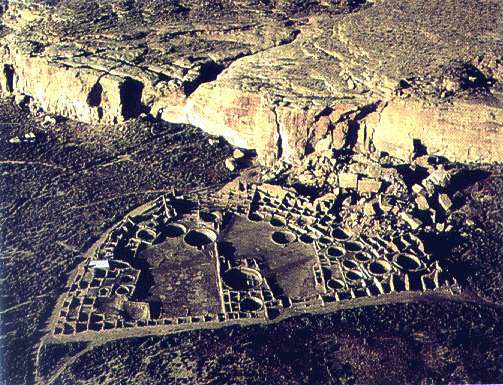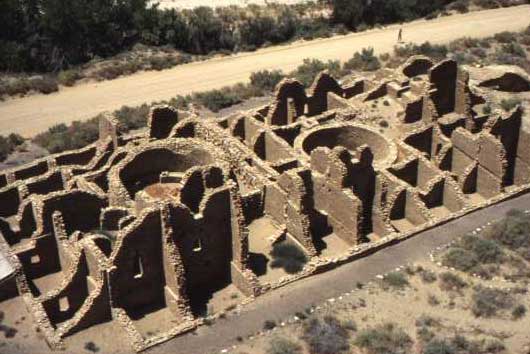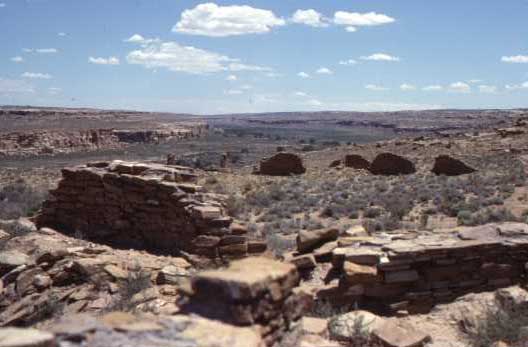|
LIVE AND WORK IN CHACO
CANYON!
CHACO CANYON,
located in the remote center of the San Juan
Basin of northwest New
Mexico, is one of the most spectacular archaeological places in North America. Between A.D. 900 and 1100, a stunning cultural
transformation occurred as small farming villages coalesced into dense
communities surrounding massive communal buildings called Great Houses. But
despite more than 100 years of archaeological research, the reasons for this
remarkable period of social dynamism remain enigmatic and mysterious.
The Department of Anthropology at the University
of New Mexico is conducting new
research at Chaco Culture National
Historical Park and invites applications for places in the first
undergraduate field school in Chaco since
the 1940s. The field course will be held during the Spring Semester, 2008, and all participants must enroll in an
integrated cluster of three courses.

Think of this integrated course as an intensive immersion in Chaco studies and the latest developments in
archaeological methods and theory. For the first four weeks of the semester,
students attend classes on UNM's main campus, utilizing the laboratories and
collections of the Department of Anthropology and the Maxwell Museum of
Anthroplogy as they are introduced to the fundamentals of archaeological data
analysis, field research, and Chaco
prehistory. Then for five weeks, Monday through Thursday, students will live
at Chaco Canyon where they will participate in
excavations at Pueblo Bonito during the day and work in the lab or attend
lectures in the evening. In November the students return to the main campus
where they will analyze material from the field session and continue to
explore Chaco issues in seminar settings.

The course is co-taught by Professors W. H. Wills and Patricia L. Crown,
who have extensive field and lab experience in Southwest archaeology. Guest
lectures and field tours will be given by adjunct faculty, including Dr.
Wendy Bustard and Thomas Windes of the National Park Service, and research
collaborators with specialties in bioarchaeology, ethnobiology, geology and
paleontology.
The cool temperatures and clear days make Spring the ideal time to conduct
field work in Chaco. Students can ride their
bikes to the field site, an easy 5 miles along a paved road that winds past
millennium old ruins, hike to remote sites on scenic trails, participate in
archaeoastronomy programs offered by the Park Service, and join in
traditional evening volleyball games. The field and lab work will be
demanding but living at Chaco has rewards
found nowhere else.

|




